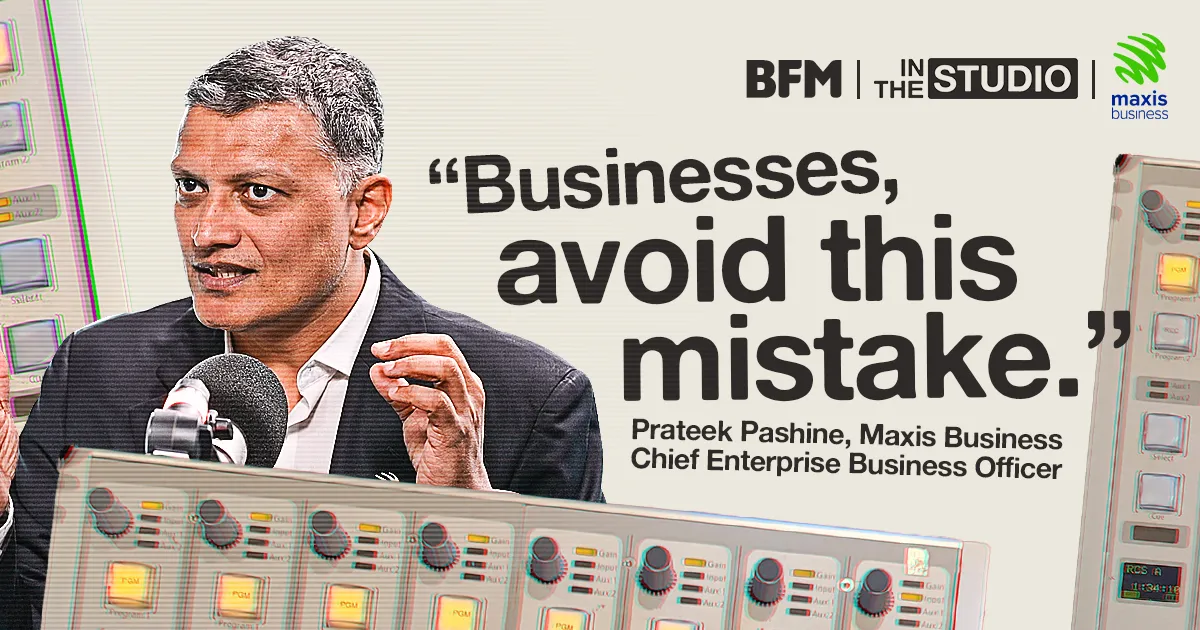Revolutionising Business: Understanding the Potential of Digital
Digital transformation is the new(-ish) silver bullet. Among other things, it promises to increase Malaysia’s GDP by about RM40 billion in the next couple of years.
But if you were asked to explain what digital transformation means, right now, could you do it? If you do not have a ready answer, or even if you do, but it does not match exactly with what other experts are saying, don’t worry, you are in good company.
Over the years, the lack of consensus on what the term means, and whether it really works, has frustrated a lot of business leaders. Digital transformation fatigue is real, and an unfortunate side effect is the risk that those who can actually benefit from it tune out and miss some very important insights.
So bear with us as we examine – in the simplest terms – what experts agree upon when it comes to harnessing digital power, giving examples of how the right ‘transformations’ can carry your business safely and profitably through an increasingly disrupted world.
A simple definition
George Westerman, Principal Research Scientist with the MIT Sloan Initiative on the Digital Economy, describes digital transformation as ‘[a] radical rethinking of how an organisation uses technology, people and processes to change business performance.’ In other words, finding new uses for what you have at your disposal to not only adapt to, but anticipate, and cash in on modern opportunities as they present themselves.
To simplify it even further, Deloitte states: ‘Digital transformation is the process of future-proofing one’s organisation.’ Let’s take a closer look at what this means.
Transform or perish
Here is one point that everyone agrees upon. You cannot keep doing what you have been doing for the past 20, 10 or even past five years. Legacy systems simply can’t change fast enough to keep up with the changes facing today’s businesses.
Digital transformation, however, has been shown to breathe new life into languishing companies, including global brands such as Microsoft and Nike.

Proof of potential
It may be difficult to remember now, but in 2014, Microsoft stock was selling at a mere US$38 (RM159) per share. The company seemed to be on the cusp of sliding into irrelevancy when competition forced Microsoft to reconsider its entire strategy. It formed partnerships and moved its focus to offering software as a service (SaaS). In just five years, ‘Microsoft went from being seen as an outdated or stagnant company to a forward-thinking cloud solution.’ As of the writing of this article, stock prices today are worth US$137 (RM574), a growth of over 258%.
Nike was another company whose time appeared to have passed. Then it transformed. It harnessed the digital potential to reach changing demographics. ‘The improved digital focus gives Nike a faster product development cycle, which allows it to get new products to market quickly, respond and set trends and control how many items are produced.’ In two years, Nike revenue increased from US$33.5 billion (RM140.5 billion) to US$39.1 billion (RM164 billion).
Pick your fit
While this should go without saying, there is no one-size-fits-all digital transformation. In our previous example, Nike transformed to make its products more desirable and readily available to a demanding market. A completely different organisation, the University of New South Wales, decided to focus on solutions that would improve communication and collaboration between students, faculty, researchers, staff, and partners. The technology that has, among other things, boosted student engagement, classroom collaboration and distance learning, supports UNSW’s strategic goal to become Australia’s global university.
The important thing here is to understand your individual needs. A company that encourages a BYOD (Bring Your Own Device) culture may recognise the need for fixed lines to give credibility to certain functions, such as sales.
There are as many examples as there are companies: Companies are highly individual, and it is up to the leadership to come up with a strategy based on their service or products, current level of digital maturity and, most of all, long-term aspirations.
It’s a journey
Change is not a fad; it is the new reality. There will be no point at which a CEO will be able to say ‘There, we’re done.’ In fact, the beauty of a journey is that it is made up of steps, and it is recommended that in order not to delay (or feel overwhelmed) you start with ‘micro-revolutions’: quick win transformations in key areas such as improving customer experience and digitalising internal processes.
In the first three years of Honeywell’s digital transformation, initiatives that included ‘streamlining internal processes and digitising as much as possible,’ the multinational’s stock rose by 83%. Closer to home, Eats, Shoots and Roots adopted a communications solution that would enable their small, mobile team to keep in touch with each other and their clients. Foodpanda, whose app has been downloaded over 10 million times, ensures fast deliveries by keeping its network of more than 16,000 partner restaurants across the country reliably connected.
No matter where you are in your journey, what matters is that you take the next step.
More in this series:
1. The Digital Advantage: What is the Future of Business?
2. Revolutionising Business: Understanding the Potential of Digital
3. A Competitive Foundation: Creating a Digital Culture
4. Unified Communication: Your Gateway to Transformation






